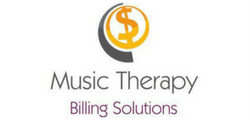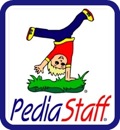We’ve all made this mistake. It’s human nature. Evolution, really. We can’t help it. We’re wired to respond this way.
A child gets angry. The child cries, yells, hits, pinches. Our blood pressure rises. Our voice gets louder. We get in their face so they pay attention to us. We bark at them.
Does this work? Maybe. Temporarily. But if you’ve been in that situation, you will notice the child calms down in fear. You can see it in their face.
As a therapist, there will be times when the children we work with upset and angry. Most of the time, it’s an important part of the therapeutic process. When a person is angry (or upset or sad or scared), they are in a stressed out, or dysregulated state (and vice versa, a calm person is in a regulated state). Their body’s stress response (e.g. the “fight, flight, or freeze” response) is working. Their brain and body is primed to fight, flee, or freeze.
And we, as therapists, need to learn how to best respond.
The 7 Ways to Calm a Child
The following seven techniques will help a dysregulated child calm down. They are based on principles of neuroscience and what happens to our brain and bodies when we get stressed. These are intended to show a dysregulated child that they are safe, that we care about them, and that it’s okay for them to be angry:
- Keep yourself calm and regulated. This means consciously keeping your voice low, which can be tricky since our natural reaction is to raise our voice. This means using open, non-threatening body language (e.g. facing the person, open stance, palms facing out). And if you are getting upset or escalated, you either need to consciously calm yourself down (and process your own feelings later) or switch out with another therapist or staff. It will not help the child if you get upset. Self-awareness here is key.
- Focus on your relationship. Likely, as a therapist, you have already developed some sort of working relationship with your client. Use that to let them know they are safe and that you are not going away. Use calming words (e.g. “I care about you”). Use their name when talking to them. Think of the nurturing-types of behaviors you typically engage in: does the child sit on your lap? do you hold them? do you rub their back? Use what you have.
- Allow time to respond. When we are escalated, it’s hard to think clearly. How often have we said something we don’t mean in the heat of the moment? That’s because the part of our brain responsible for making decisions takes a backseat to the primitive part of the brain responsible for reacting quickly to stress. What does this mean for our clients? It means that, when dysregulated, they will need time to process and respond to verbal directions. They will need time to calm down.
- Provide a physical sense of safety and security. This can mean different things depending on the child and what works for them. It may mean gently rubbing their back. It may mean deep pressure on their shoulders. It may mean keeping away, but staying in the room. Regardless, it’s important for the child to know that you are not leaving. It’s like when a baby gets upset. What’s one way for a parent to calm down the babe? Hold them. Rock them. Physically let them know their safe, you are there to take care of them, you care. Same principle.
- Validate the child’s feelings. Feelings are never wrong. It’s okay to feel sad/angry/fearful/happy. What’s not always okay is how we react to our feelings. There is a difference. Let the child know they what they are feeling is okay. Also, a child may not have a label for what they are feeling. You may need to “be their brain.” Say “you’re angry” or “you’re sad.” As anyone who’s ever had an undiagnosed illness, if you ave a label for what’s wrong with you, that can make a world of difference.
- Sing a song. I have to include this as a music therapist. If a child really responds to music, I will sing one of their favorite songs. And it’s especially effective if you can incorporate rocking with the song (rocking stimulates a part of our cerebellum that calms down our stress response). Singing a song can also be used to redirect their focus or to focus on your relationship. It once took me 3 minutes (enough time for us to rock to one song) to get two boys completely calm after they had been dysregulated for over 20 minutes.
- Remember it’s unconscious. Okay, so this is not really a technique, but it is a very important point. When a child (or anyone, really) is dysregulated, the unconscious brain is in overdrive. Our conscious brain (the neocortex) is not effective. Keep verbal instructions to a minimum (one test I have for seeing if a child is regulated is to have them follow a two-step direction). Keep sentences short and concrete (“You’re safe” “You’re angry” “I’m here”). Use techniques to target the unconscious brain (e.g. singing, soft touch, time to process, etc.).
If you implement these 7 techniques, you will notice that your clients calm down smoothly and easily. These are simple, but powerful ways that work. Try them. And please let me know what you think!


 orcid.org/0000-0001-8665-1493
orcid.org/0000-0001-8665-1493






Hi there,
What an excellent posting- for anyone who works with children. Thank you for writing on such relevant subjects in the work of music therapists, as well as other caregiving professionals. It is such a challenge to keep a cool head when things escalate for everyone involved. It’s nice to be reminded of some simple tips to have at the ready in one’s “bag of tricks.” Thank you!!!
Elizabeth
Thank you so much for reading this, Elizabeth – it means a lot!!! We have had many conversations about how isolating it can be working as a music therapist. This is my little way of reaching out to other music therapists and working to connect us.
(P.S. If you have any questions you would like answered or ideas for a post, please let me know:D)
Kimberly
Comments on this entry are closed.